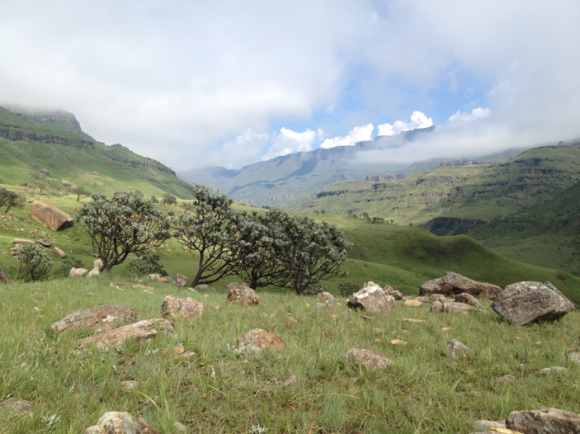A new study, published in Nature last week, has found that the native biodiversity of natural forests largely buffers the severity of non-native tree invasions.
The bad news, however, is that humans remain mostly responsible for introducing non-native tree species to an area in the first place – either intentionally or accidentally.
These are two of the key findings from a global study to determine the relative importance of human activity, environmental conditions, and biological diversity as drivers of tree invasions worldwide.
The study, titled “Native diversity buffers against severity of non-native tree invasions” was published in the journal Nature on Wednesday, 23 August 2023.
Prof Cang Hui, holder of the South African research chair in mathematical and theoretical physical biosciences at Stellenbosch University (SU), and one of the co-authors on the study as part of the Global Forest Biodiversity Initiative (GFBI), says trees are exposed to a wide range of ecological and human factors, and tree invasions are both drivers and passengers of global environmental changes. Prof Hui is also a core team member of the Centre for Invasion Biology.
This is because of their size, long life span and important role in forestry, foraging, city landscaping and reforestation, as well as carbon sequestration and climate regulation. Yet invasion biologists have long been struggling to identify the ecological mechanisms driving the invasion success of a small portion of non-native tree species.
Their findings support the biotic resistance hypothesis, which holds that greater diversity in the native community will fill the ecological niches and reduce available resources, thereby limiting non-native species to take up niche spaces.
The prominent role of human activities, however, came as a surprise: “Our findings suggest that human activity may overwhelm ecological drivers of invasions and even reduce the influence of ecological processes,” he warns.
Repeated human introductions of plant species, especially close to ports and airports, play an important role in the initial introduction process. The severity of the invasion, however, is predominantly a result of the intrinsic diversity of the native community. It is therefore important to conserve natural forests to maintain high native tree diversity, they write in the paper. Furthermore, because many tree species are introduced purposefully for forestry or to support local livelihoods, they recommend that local stakeholders are included when making decisions about how best to benefit from these managed forests.
Some of the other findings include:
· The most frequent non-native trees in the GFBI database are Black Locust (Robinia pseudoacacia), Scots pine (Pinus sylvestris), Osage orange (Maclura pomifera), Norway spruce (Picea Abies) and Tree of Heaven (Ailanthus altissima).
· The regions with the greatest likelihood of being invaded are North America, Europe and East Asia.
· In environments experiencing cold or hot temperature extremes, the non-native trees were more similar to the native community.
· Moderate environments allowed a wider range of species to survive.
Read the article in Nature
Delavaux et al. (2023) Native diversity buffers against severity of non-native tree invasions. Nature, https://www.nature.com/articles/s41586-023-06440-7
For more information, contact Prof Cang Hui at chui@sun.ac.za




